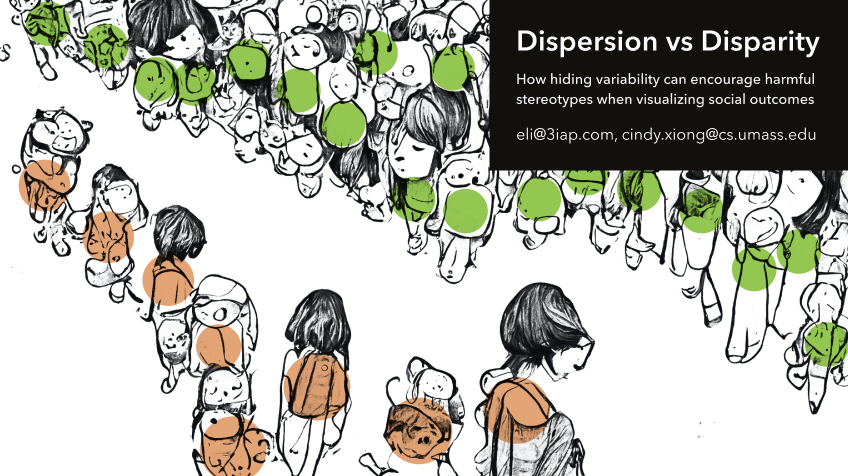Dispersion vs Disparity: Hiding Variability Can Encourage Stereotyping When Visualizing Social Outcomes
Eli Holder, Cindy Xiong
View presentation:2022-10-19T21:09:00ZGMT-0600Change your timezone on the schedule page
2022-10-19T21:09:00Z

Prerecorded Talk
The live footage of the talk, including the Q&A, can be viewed on the session page, Uncertainty.
Fast forward
Abstract
Visualization research often focuses on perceptual accuracy or helping readers interpret key messages. However, we know very little about how chart designs might influence readers' perceptions of the people behind the data. Specifically, could designs interact with readers' social cognitive biases in ways that perpetuate harmful stereotypes? For example, when analyzing social inequality, bar charts are a popular choice to present outcome disparities between race, gender, or other groups. But bar charts may encourage deficit thinking, the perception that outcome disparities are caused by groups’ personal strengths or deficiencies, rather than external factors. These faulty personal attributions can then reinforce stereotypes about the groups being visualized. We conducted four experiments examining design choices that influence attribution biases (and therefore deficit thinking). Crowdworkers viewed visualizations depicting social outcomes that either mask variability in data, such as bar charts or dot plots, or emphasize variability in data, such as jitter plots or prediction intervals. They reported their agreement with both personal and external explanations for the visualized disparities. Overall, when participants saw visualizations that hide within-group variability, they agreed more with personal explanations. When they saw visualizations that emphasize within-group variability, they agreed less with personal explanations. These results demonstrate that data visualizations about social inequity can be misinterpreted in harmful ways and lead to stereotyping. Design choices can influence these biases: Hiding variability tends to increase stereotyping while emphasizing variability reduces it.